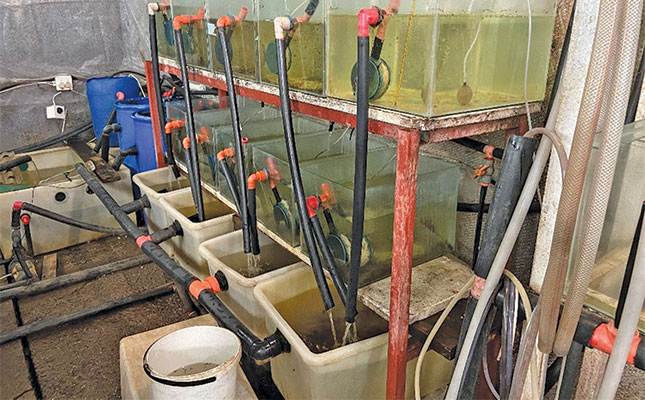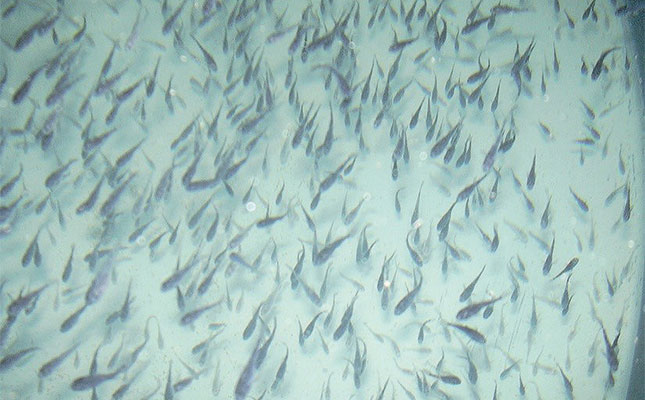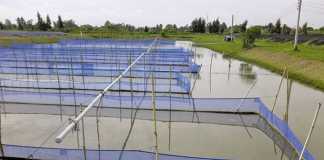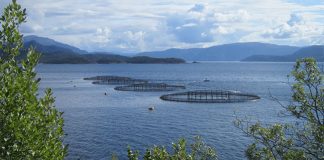
Photo: Leslie Ter Morshuizen
Fish farming begins in the hatchery, and the quality and quantity of fish that leave the hatchery direct the level of success achieved in the grow-out phase and thereby the economic viability of the fish farming business.
In this feature, we look at some of the principles that should be applied in the hatchery to set the right trajectory for the rest of the farm.
1. Health
The importance of health in the hatchery cannot be overstated. When securing broodstock, remove all parasites and pathogens so that you are operating the hatchery as a disease-free environment.
When, rather than if, problems occur during incubation and fry rearing, the absence of infectious agents greatly reduces fish losses and simplifies the application of solutions.
Furthermore, when the fingerlings are moved to the grow-out phase, or sold to grow-out farms, the absence of infectious diseases is a major benefit.
2. Overproduce
Always produce more fish than you require. Not only do breeders provide varying quantities of eggs at each spawning, but the number of fingerlings raised in each batch is only an estimate. By producing greater numbers than are required, you ensure that you’ll always have sufficient fish for your requirements.
Every batch comprises fish that vary in size. The larger fish are faster growing and are therefore the ones that are desired for the grow-out phase; smaller fish are slower growing and therefore undesirable for grow-out.
Overproduction by a factor of two or three allows for heavy culling to be applied to each batch, enabling you to retain only the fastest-growing fish for grow-out.
The impact of this is profound. Consider the graph on the opposite page, which shows the difference in mass of three size classes of fish from the same spawning batch. The data is stylised but could easily be taken from a real batch of fish in a hatchery, although the starting mass would actually vary, amplifying the effects shown in the chart.
After 30 days, the fastest-growing batch of fish averages 4,5g, whereas the mean batch average is 2,3g and the slowest-growing fish have only attained 1,2g.

Clearly, the fastest-growing fish will reach market size long before the medium- or slower-growing batches and are therefore the most desirable fish to raise.
By producing three times more eggs and fry than is required, followed by heavy culling in the hatchery phase, the grow-out phase becomes far more cost effective than if all the fish were reared.
Some people question this logic, arguing that the hatchery feed is more expensive than grow-out feed, and the portion fed to the culled fish is then wasted. In a standard batch of catfish, however, the hatchery feed represents 0,015% of the total feed budget from egg to market size.
This tiny proportion means that the cost of hatchery feeding becomes insignificant relative to the huge benefit associated with only producing faster-growing fish for grow-out.
3. Best feed possible
The argument above demonstrates that hatchery feed is a small component of the total feed budget on a fish farm.

Given that feed quality and quantity are major drivers of fingerling growth, it is a wise to purchase the best-quality feed available to ensure optimal performance of the fingerlings.
4. Water quality
Fry and fingerlings are generally the most sensitive life stages to water quality, and often even low concentrations of metabolites in their water will impact their health and therefore growth.
Always ensure that the quality of the hatchery water remains excellent and appropriate for the species of fish being farmed.
5. Handling
Always handle fish gently; not only can rough handling physically harm the fish but, depending on the species, it can set back feeding for a while after handling, which results in reduced growth.
Certain genera of fish, such as Pangasius, resent being handled, whereas others, including tilapia and carp, are almost unaffected by appropriate handling.
Most fish become accustomed to handling, and in such instances, regular, gentle handling results in less stress.
6. Size sorting
Every group of fish includes those that are more and less assertive, and this translates into feeding leading to differential growth.
Size sorting is important to ensure that the less aggressive feeders also have a chance to feed as they can also grow well if given the opportunity to do so.

In cannibalistic species, size sorting also serves the role of restricting the opportunities for batch mates to eat each other.
Leslie Ter Morshuizen designs and builds fish farms across sub-Saharan Africa, trains farmers to manage them optimally, and has run his own operations.
For more info email [email protected].













